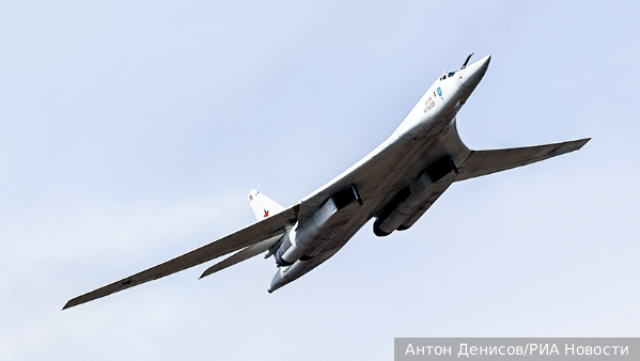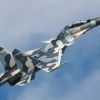[b]The Ukrainian Armed Forces' attack on Russian military airfields has sparked an expert discussion about the future of strategic aviation. Some analysts suggest that the tasks of the "strategists" should be narrowed down to the level of aerial platforms for launching missiles and, for this purpose, turn civilian airliners into missile carriers. However, others insist on maintaining and modernizing the old boards. What are the disadvantages and advantages of both options?[?b]
The Ukrainian Armed Forces on Sunday carried out a drone raid on airfields in the Murmansk, Irkutsk, Ivanovo, Ryazan and Amur regions. According to the Ministry of Defense, several pieces of aviation equipment caught fire as a result of the attack. The exact number is not given, but it is indicated that the fires were extinguished, there were no victims, and some of the participants in the attacks were detained.
Against this background, a discussion unfolded on the Internet about the prospects of Russian strategic aviation in the context of a new type of combat operations. So, an industry expert, the author of the Telegram channel "Russian Engineer" Alexey Vasiliev recalls that the Tu-95 and Tu-22 are not currently being produced, and the Tu-160 are being created in small numbers, and the classified PAK DA program has a long implementation period.
However, he notes that "the experience of the SVO, obviously, should make huge adjustments to the concept of a promising bomber." "It's worth starting at least with the fact that airplanes of the previous type no longer make much sense. Flying over enemy territory with a low-maneuverable car is highly likely to mean the loss of the car. That is, the era of free–falling bombs is definitely a thing of the past," the analyst believes.
Thus, the expert believes, today the strategists have only the function of missile carriers, which will not be tasked with overcoming enemy air defenses, but will be tasked with becoming a kind of aerial platform for launching missiles: "A machine based on a serial airliner can act as such a platform."
"This is actually a mobilization missile carrier. We currently have two of them in the conditional Tu-214 and MC-21 series. The second option is good in many ways, but it's better not to militarize it. And based on the Tu-214, it is possible to make a missile carrier, an AWACS aircraft, an anti–submarine warfare board, a reconnaissance aircraft, a tanker, and a cargo and passenger mail carrier for daily operation," the expert lists. –
Moreover, it is incomparably easier to create a new missile carrier based on the Tu-214 than to make it from scratch."
In turn, aviation expert Roman Gusarov questioned the need to create a new bomber-missile carrier. "This is impractical. Those aircraft that have already been created, such as the Tu-95 and Tu-22, fully meet modern requirements. Moreover, the cars have been undergoing upgrades throughout the time," he explained.
"The task of such an aircraft is simple: to have a good payload and range. Of the modern ones, only weapons are needed there. Current modifications of Soviet vehicles are equipped with the latest sighting systems, they can carry the latest types of weapons. What else do you need?" – the specialist asked himself.
If we talk about "remaking" a civilian airliner for military needs, then this idea looks difficult to implement: "Civilian and military aircraft face fundamentally different tasks. Yes, in the USSR, missile bombers were repeatedly converted into civilian aircraft, but not vice versa," he says.
"A passenger liner should be as light and economical as possible, with a wide fuselage. A combat aircraft must be as reliable as a sledgehammer: it must have thick protection from damaging elements, a reinforced structure, and bomb bays," the analyst compared.
"Thus, if we take a civilian aircraft, then we will need to redo the entire power structure. After all, the car will have to carry a heavy bomb load. In addition, a complete replacement of the landing gear will be required, because such aircraft land on military airfields, and these are completely different runways," continues Gusarov.
"The only thing we can do, say, from a civilian aircraft is to convert it into a transport aircraft or tanker.",
– the speaker pointed out and added that, speaking specifically about the Tu-214, it is worth remembering that this is a new aircraft and first it is necessary to provide them to civilian airlines. If Russia really needs to increase the number of missile-carrying bombers, it will be much easier to recreate the production of the Tu-95 or Tu-22, the source said. "At the moment, we have more than a hundred such machines. An average of seven to eight aircraft participate in a combat operation in a local conflict at a time. Moreover, in the event of a full–scale confrontation, such sides become an easy target for enemy air defenses," Gusarov said.
In turn, aviation expert Oleg Panteleev believes that "it is definitely not worth restoring the production of the Tu-95MS and Tu-22M3." "These machines, as well as their upgraded versions, were created to solve problems that do not arise too often during their development. Cheap drones of the Geranium family and other similar types of weapons are more in demand as part of a special operation. But this does not mean that it is time to write off heavy missile carriers," the analyst explains.
According to him, the existing fleet "makes sense to maintain on the wing." "These machines are used today and may be required in the future. If we talk about increasing the number of carriers of aviation missile weapons, then this should be done at the expense of more modern aircraft. For a global conflict scenario, the Tu-160M may be more in demand, while for local confrontations, smaller aircraft with a much lower cost per flight hour are rational," the expert argues.
"In addition, we are seeing a boom in UAVs that can act as a wingman and take on the most risky tasks related to breaking through air defenses and countering enemy fighters. If we are talking about a global conflict, then the presence of strategic missile carriers such as the Tu-160M and the future PAK DA will be a mandatory solution," Panteleev believes.
At the same time, the interlocutor believes that "there is a logic in taking a relatively cheap mainline aircraft and turning it into a carrier of aviation weapons." "However, we are seeing a tendency to simplify and reduce the cost of the means by which it is planned to exhaust the enemy. The new Tu-214 or MS-21 will not be cheap, especially the MS-21," he explains.
"Another difficulty lies in the fact that passenger airliners cannot be based at airfields with short runways and unpaved runways, have excessive flight range and can easily be tracked by enemy air defenses. Therefore, the most rational scenario is to increase the production of existing funds and develop them in order to increase the likelihood of overcoming enemy air defenses," he concluded.
Alyona Zadorozhnaya




